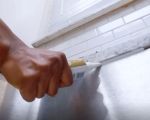Patching Small Holes in Drywall: A Step-by-Step Guide
As someone who's spent plenty of time in my home dealing with minor wall imperfections, I can confidently say that patching small holes in drywall doesn't have to be intimidating. Whether it's from a nail pop, a small dent, or just general wear and tear, fixing small holes in drywall is a task most homeowners can tackle on their own. With the right tools and a little bit of patience, you can make your walls look brand new again without having to hire a professional.
Understanding the Common Causes of Small Holes in Drywall
Before we dive into the repair process, it's helpful to understand what typically causes these small holes in drywall. The most common culprits include:
- Nail Holes: Hanging pictures, mirrors, or shelves can leave behind small holes from the nails or screws used to mount them.
- Doorknob Dents: Sometimes, a doorknob can make contact with the wall, leaving a small dent.
- Accidental Scratches or Impact: Accidental bumps from furniture or general wear can leave behind small punctures or abrasions on your walls.
- Settling of the Home: Over time, as your home settles, minor shifts can cause small cracks and holes in the drywall.
Identifying the cause of the hole will help you determine the best method for repair, but for the most part, repairing small holes in drywall follows the same basic steps.
What You’ll Need to Patch Small Holes in Drywall
Before you begin, make sure you have the following tools and materials:
- Drywall patching compound (also called spackle or joint compound)
- Putty knife
- Sandpaper (medium and fine grit)
- Primer and paint that matches your wall color
- Paintbrush or small roller
- Drop cloths or painter’s tape for protection
With these tools at hand, you’re ready to get started on your drywall repair project!
Step-by-Step Process for Patching Small Holes in Drywall
Step 1: Clean the Hole Area
The first thing you need to do is clean the area around the hole. Use a small brush or a damp cloth to remove any dust, dirt, or debris around the hole. If the hole is rough, gently smooth out the edges with a utility knife to ensure the patching compound adheres well.
Step 2: Apply the Patching Compound
Next, using your putty knife, apply a thin layer of the drywall patching compound directly into the hole. You don’t need to fill the hole in one go; apply a little at a time to avoid excess mess. Spread the compound evenly, and be sure to slightly overfill the hole. This ensures that when it dries, you can sand it down smoothly.
Step 3: Smooth and Sand the Area
Once the compound has dried (usually after a few hours or according to the manufacturer's instructions), take your medium-grit sandpaper and gently sand the patched area. The goal is to make the patch blend seamlessly with the surrounding wall. After sanding, if the area feels rough, switch to finer grit sandpaper to smooth out the texture.
Step 4: Prime and Paint
After sanding, apply a coat of primer to the patched area. This step is crucial as it helps the paint adhere properly and ensures the color matches the rest of the wall. Once the primer has dried, apply a layer of paint that matches your wall. You may need to apply more than one coat depending on the color and texture.
Step 5: Clean Up
After the paint has dried, clean your tools and dispose of any drop cloths or materials used during the repair. Step back and admire your work – the hole is gone, and your wall looks as good as new!
Real-Life Story: How I Fixed the Hole in My Living Room Wall
Let me share a quick story. A few months ago, I accidentally made a small hole in the wall while moving a piece of furniture in my living room. I had just redecorated the space and didn't want to hire a professional for such a minor fix. Armed with the steps mentioned above, I tackled the repair myself. To my surprise, the patch job looked flawless! It wasn’t just about the satisfaction of saving money – it was about restoring the space I loved.
After completing this small project, I realized how simple and rewarding it is to take care of these repairs yourself. The key is being patient and following the right steps. Plus, the tools needed are inexpensive and can be used for future projects, making this a great DIY skill to learn.
Common Mistakes to Avoid When Patching Small Holes
While patching small holes in drywall is straightforward, there are a few common mistakes that can make the process harder or affect the final result:
- Overfilling the Hole: It’s tempting to fill the hole completely at once, but doing so can result in a patch that’s too thick and takes longer to dry.
- Not Sanding Properly: Failing to sand the patched area smooth can leave the repair noticeable. Take the time to sand evenly for the best finish.
- Skipping the Primer: Skipping the primer can result in uneven paint coverage, especially if the patched area absorbs paint differently than the rest of the wall.
By avoiding these mistakes, you’ll ensure your repair is not only successful but also blends perfectly with the surrounding wall.
Conclusion
As you can see, patching small holes in drywall doesn’t require professional skills – with the right materials and a little patience, anyone can tackle this DIY project. Whether it's from a simple nail hole or a small impact, a few easy steps will restore your wall to its original beauty. And remember, the next time you’re looking for home improvement tips or tools for a DIY job, don’t hesitate to check out helpful resources online, including stores like Scent Snob for all your DIY needs!









